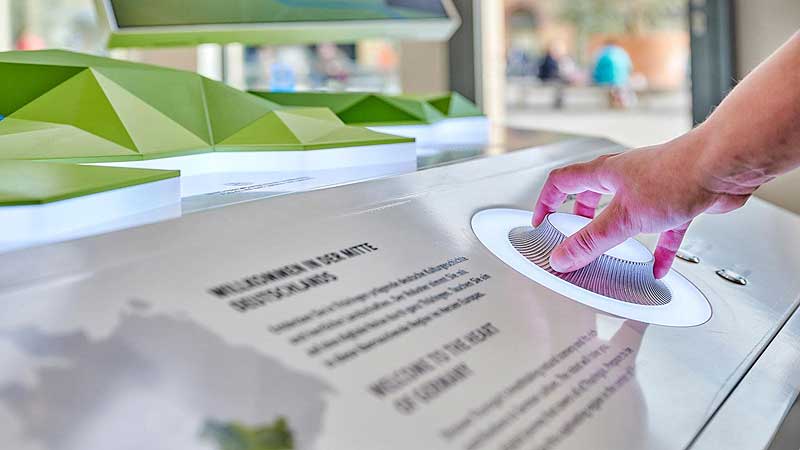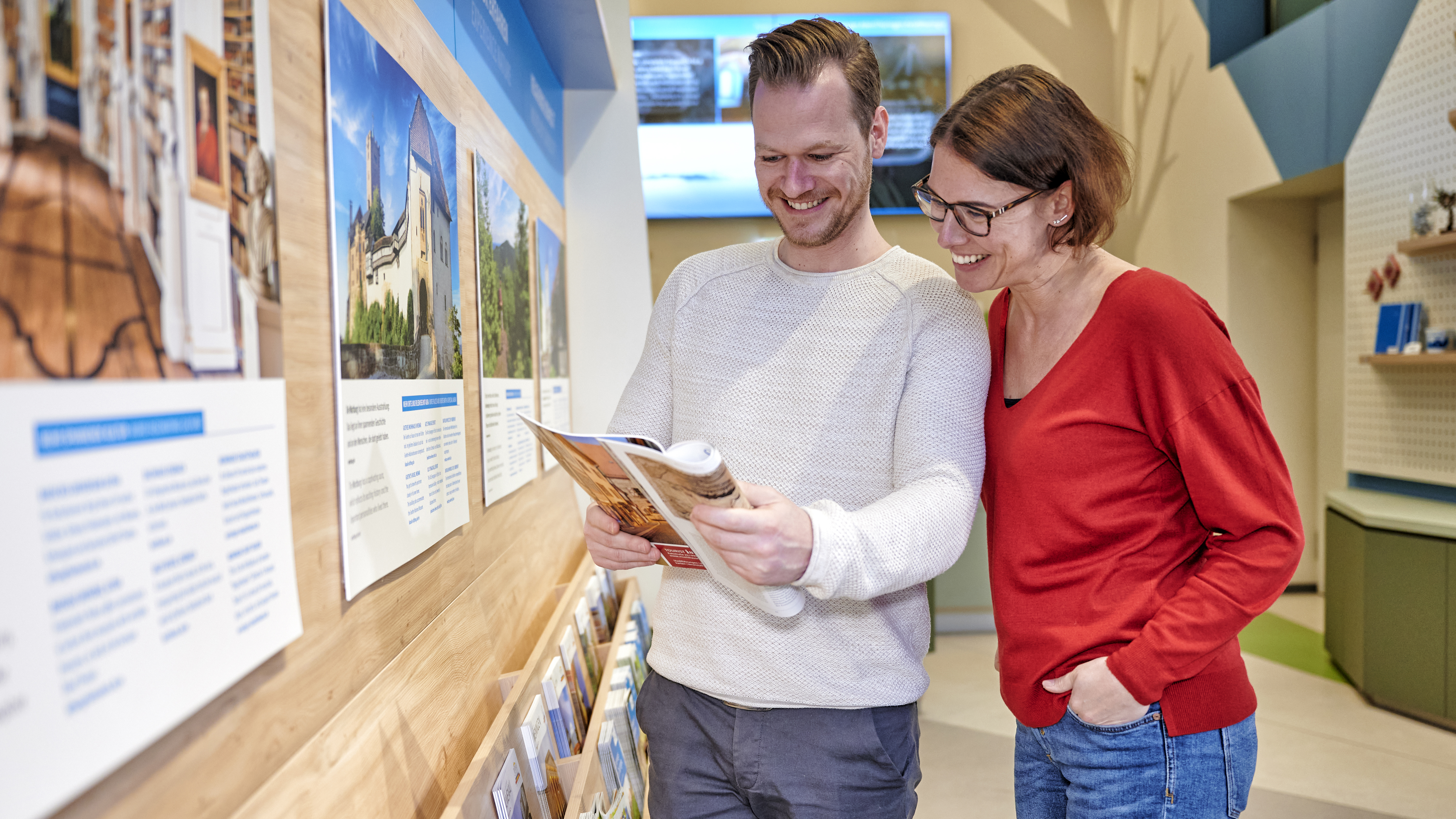Sustainability is on everyone's lips, and it is important. It's about us and our future, about a healthy environment, healthy people, a fair and just world for everyone. Come along and discover good examples in Thuringia – certified spots, sustainabel offers, national natural landscapes and more!
Wartburg-Hainich World Heritage Region
Taking a short break away from the city
Friday: Welcome to the old imperial city of Mühlhausen.
Mühlhausen is conveniently located near Germany's geographic center, making transportation there fast and simple. The town, which attained "imperial freedom" in 1251, greets visitors with eleven majestic church spires and striking half-timbered structures. You may easily leave your car at the family-run, three-star superior Hotel Brauhaus Zum Löwen and check in later in the afternoon. The hotel is conveniently situated in the old town, offers a high degree of comfort in contemporary, barrier-free rooms while simultaneously radiating a medieval charm with its time-honoured, half-timbered structures.
A short stroll to the tourist information office will give you a taste of Mühlhausen's unique atmosphere. In the ground-floor rooms, the staff are happy to help with questions and arrange a personalised guided tour for the afternoon programme. A pleasant walk along the well-preserved town wall takes you to Divi Blasii Churcch, where Johann Sebastian Bach used to work as an organist. The magnificent St. Mary's Church also provides extensive history information. Only slightly smaller than Erfurt Cathedral, it is the second-largest church in the Free State of Thuringia. Even with its ongoing renovations, a visit of the Peasants' War Museum, located in the large Kornmarktkirche, is fascinating.
The tragic hero of the Peasants' War
The old town offers plenty of convenient food stops in between the cultural highlights. A good example is the Café and book shop Strecker. Konditorei Menzel and Helbing am Untermarkt also serve coffee and pastry delicacies. Thus Thuringian friendliness and Home-brewed beers await you at the "Brauhaus Zum Löwen" restaurant. On warm days, you can also enjoy the beer garden's view of the legendary Kornmarkt while shaded by lime trees.
Saturday: The nobility welcomes you to Gotha.
It takes less than an hour to get to the ducal residence city of Gotha. In the mornging, after arrival, we visit one of Germany's most significant baroque palaces: Friedenstein Palace. It was built after the Thirty Years' War and bears the desire for peace in its name. Now it houses three museums, the ducal apartments and a baroque theatre gem. The palace museum is especially striking and conveniently located. Numerous baroque and rococo rooms, including the sumptuous banqueting hall and the duke's audience chamber, are still open for tours despite ongoing renovations. Duke Ernst I established the art chamber, which features curiosities such as a silver and gold elephant.
Europe's grandfather
Dining in the baroque palace complex is also extremely appropriate given its prominence. Ground floor access leads to the Pagenhaus restaurant, which is part of the castle's west wing and provides a classy setting for a meal break.
The afternoon carries on in equally impressive fashion. We have a trip to the Ducal Museum planned. It is located down the Schlossberg and can be reached in a matter of minutes. The superb neoclassical edifice hoses a vast collection of artwork, from antiquity to modern times that the Dukes of Gotha gathered over three centuries. Ernst II of Saxe-Coburg and Gotha built one of the earliest museum buildings in Germany when the palace could no longer contain its treasures. In addition to the Egyptian collection, Japanese lacquer art, a collection of paintings including Cranach and Rubens, but above all the Gotha lovers are admired by connoisseurs. The latter is the first large-format double portrait in Germany panel painting depicting a secual, non-liturgical scene.
You should definitely stop by the Gotha Tourist Information Office before your day excursion ends. This well-stocked service station, located close to the town hall, provides gourmet treats and souvenirs from all over Thuringia under the "Gotha adelt" brand. Back in Mühlhausen, a visit to the sophisticated à-la-carte restaurant Puschkinhaus is highly recommended as a way to cap off an exciting day.
Sunday: A fragrant finale in the spa and rose town of Bad Langensalza
On the last day, we recommend a visit to Bad Langensalza. Known for its healing thermal brine springs and its charming old town, the town is particularly impressive with its garden culture and opulent parks.
A trip to the Japanese Garden is highly recommended. If you make reservations in advance at the tourist office, you can participate in a traditional Japanese tea ceremony there. In the tea house, tea is shared in accordance with a predetermined ritual amongst an aesthetically pleasing environment of Far Eastern architecture and horticulture. This serves as an invitation to peace and introspection. An equally remarkable experience is the neighbouring rose garden, which is home to 450 different varieties of the queen of flowers. Stay fo a while and enjoy the fragrant scent of roses.
Roses and "Old love" in Bad Langensalza
After that, take a leisurely stroll through the spa gardens, which have many spots where you may sit and relax. Heading into the old town, the route passes by the charming baroque garden at the Friederikenschlösschen. Here are some impressive half-timbered houses that have been lovingly renovated. The carillon is a must-see; it tolls daily at 12 and 18 hours. The old fountain in front of the town hall is the ideal spot to hear it. Take advantage of the opportunity to select a souvenir from the tourist information office if you haven't already got one.
Before returning home, you can enjoy delicious and seasonal Thuringian food with a view of the historic Kornmarkt at Café & Restaurant K3, and reminisce over the past few days, before you set out on your return journey revitalised.
Head picture and photos: ©Florian Trykowski, Thüringer Tourismus GmbH
Discover more ...

















